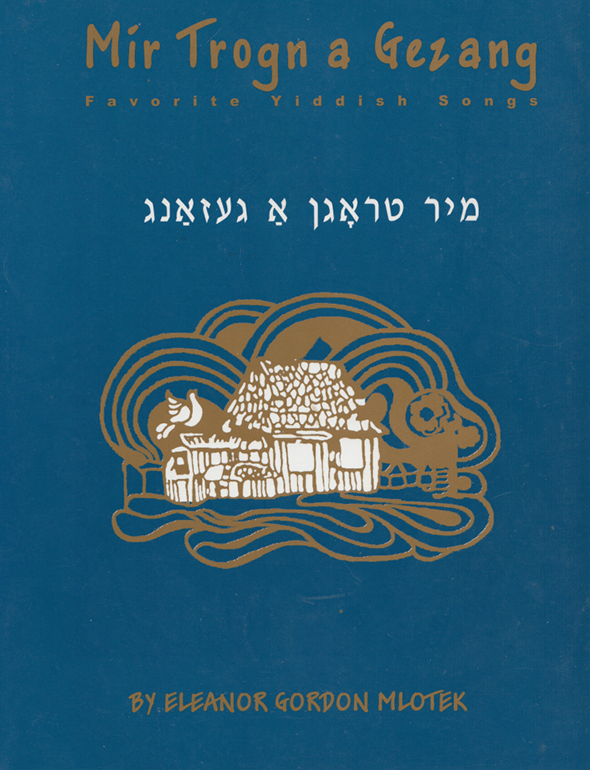Fragments of the text were published by S. Bastomski, in 1923, and others. This was one of the song hits of the Yiddish actor Aaron Lebedev.

I have ten kopeks,
I will borrow ten more,
I’ll take my pretty little girl
and go out on the town with her.
I will treat her
to candy*, dates and figs,
I will kiss her and caress her —
she will let me, and not complain
Ay-ay-ay, how sweet and good and fine,
Ay-ay-ay, how good I will have it then.
I have ten kopeks,
I will borrow ten more,
I’ll provide my pretty little girl
with all the best things.
You know, I’ll buy her
a lovely coral necklace,
and my girl and I
will get married right away.
I have ten kopeks
and I will find ten more,
and I’ll wait on my pretty little girl
like a princess.
I will build her
a wonderful house,
and she will bring me
a houseful of children.
I have ten kopeks
and I will look for ten more,
and see that my pretty girl
is well clothed and shod.
I will treat her
faithfully, fine and tenderly —
Only, tell me dear people:
where can I find a pretty little girl?
Tsen kopikes hob ikh,
Tsen vel ikh mir layen,
Kh’vel nemen mayn sheyn meydele
Un geyn mit ir gulayen.
lkh vel zi traktirn
Mit bokser, teytlen, faygn,
lkh vel zi kushn, gletn —
Zi vet lozn, zi vet shvaygn.
Chorus:
Ay-ay-ay, vi zis un voyl un fayn,
Ay-ay-ay, vet mir dokh damolst zayn.
Tsen kopikes hob ikh
Un tsen vel ikh mir borgn,
Un ikh vel mayn sheyn meydele
Mit al dos guts bazorgn.
lkh vel ir dokh koyfn
A sheynem haldz-kareln,
Un ikh vel mit mayn meydele
A khupe teykev shteln.
Tsen kopikes hob ikh
Un tsen vel ikh gefinen,
Un kh’vel mayn sheyn meydele
Vi a kinign badinen.
lkh vel ir oyfboyen
A shtibele a vunder,
Un zi vet dokh mir brengen dan
A fule shtub mit kinder.
Tsen kopikes hob ikh
Un tsen vel ikh mir zukhn,
Un kh’vel mayn sheyn meydele
Bakleydn un bashukhn.
Ikh vel zi bahandlen
Erlekh, fayn un eydl, —
ltst zogt mir, libe mentshn, nor:
Vu krigt men a sheyn meydl?
צען קאָפּיקעס האָב איך,
און צען װעל איך מיר לײַען,
כ’װעל נעמען מײַן שײן מײדעלע
און גײן מיט איר גולײַען.
איך װעל זי טראַקטירן
מיט באָקסער, טײטלען, פֿײַגן,
איך װעל זי קושן, גלעטן,
זי װעט לאָזן, זי װעט שװײַגן:
רעפֿרײן:
אײַ-אײַ-אײַ, װי זיס און װויל און פֿײַן,
אײַ-אײַ-אײַ, װעט מיר דאָך דאַמאָלסט זײַן.
צען קאָפּיקעס האָב איך
און צען װעל איך מיר באָרגן,
און איך װעל מײַן שײן מײדעלע
מיט אֵל דאָס גוטס באַזאָרגן,
איך װעל איר דאָך קױפֿן
אַ שײנעם האַלדז–קאַרעלן,
און איך װעל מיט מײַן מײדעלע
אַ חופּה תּיכֹּף שטעלן.
צען קאָפּיקעס האָב איך
און צען װעל איך געפֿינען,
און כ’װעל מײַן שײן מײדעלע
װי אַ קיניגין באַדינען.
איך װעל איר אױפֿבױען
אַ שטיבעלע אַ װוּנדער
און זי װעט דאָך מיר ברענגען דאַן
אַ פֿולע שטוב מיט קינדער.
צען קאָפּיקעס האָב איך
און צען װעל איך מיר זוכן,
און כ’װעל מײַן שײן מײדעלע
באַקלײדן און באַשוכן.
איך װעל זי באַהאַנדלען
ערלעך, פֿײַן און אײדל —
איצט זאָגט מיר, ליבע מענטשן, נאָר:
װוּ קריגט מען אַ שײן מײדל?
Song Title: Tsen Kopikes

First published in 1972, Mir Trogn A Gezang: Favorite Yiddish Songs was reprinted six more times (in 1977, 1982, 1985, 1987, 1988, 2000) due to popular demand. The songs in this anthology represent a sampling of beloved folk and well-known Yiddish songs, many of which are scattered in various song collections; some appear in very rare and inaccessible collections; and some were never before published. Folk songs comprise about a third of this volume and were selected mainly on the basis of popularity and sometimes for their historic significance. Needless to say, they are only representative of the vast, rich treasure of Yiddish folk material. The selection was made not only on the basis of personal preference, but in the knowledge they are favorites of many who sing these songs. Most of the songs represent the repertoire that was sung at Yiddish summer camps, May 1st demonstrations and at social gatherings. Many songs were introduced to American Jewry by Jewish immigrants who came to the United States after World War II, for whom these songs had been favorites in Poland and other East European communities destroyed by the Nazis.